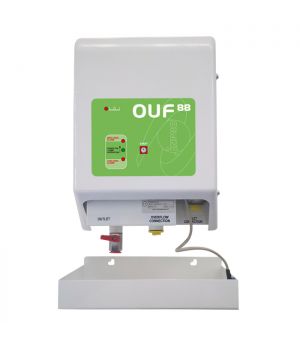Do I Need an Oil Lifter or a Pressurised Pump Unit?
Introduction
There is often a question as to whether someone would need an Oil Lifter or Pressurised Pump Unit, and the answer is highly dependant on the situation they are in. The ultimate value of understanding which option is best for you, is shown through the effectiveness, efficiency and success of the process and outcome.
Oil Lifters
Oil lifters allow the transfer of oil to reach high level installations, by sucking fuel from the storage tank, using its internal reservoir to hold a small amount of the oil. The oil retained in this reservoir is then fed to the boiler.
One situation whereby an Oil lifter would be effective, is when a de-aerator is not suitable to the height and distance of the burner installation. Generally, the suction height of a de-aerator should not exceed 4m. Thus, an oil lifter with its own integral pump can outperform a de-aerator system, as they provide a suction height of up to 8m.
Another circumstance where an Oil lifter would be beneficial, is when an oil appliance, such as a boiler is above the height of the oil level in the storage tank. Liquid needs a force to help it move uphill, thus requiring either a vacuum to suck the contents through, or pressure to help push the liquid upwards. Thus, an Oil lifter provides this option, by sitting above the level of the oil appliance, and gravity feeding the oil to that appliance.
Oil lifters are also a huge advantage if living in an area prone to power failures. The oil held in their internal reservoir allows any vaporizing burner to be continuously gravity fed oil, enabling the heating on the site to still work without electricity.
Pressurised Pump Units
Pressurised pump units are another product with a number of benefits. These systems are designed to feed single, or multiple oil appliances. These units are controlled by an internal pressure switch, enabling them to only operate when fuel is required by the connected appliance. While the previously mentioned scenarios would show preference towards an Oil lifter, there are some circumstances whereby a pressurised oil pump unit would be more suitable.
One situation where a pressurised pump unit would be more effective than an Oil lifter, is when the oil needs to be pumped over a particularly long distance. These systems can pump up to an impressive 1500m, both horizontally and vertically, providing a large range for the consumer. In this scenario, an Oil lifter would be less effective than the pressurised pump unit, as the process of using pressure to transfer liquid is significantly more powerful and stronger than the process of sucking, allowing the contents to travel a lot further with the pump uni.
One benefit of pressurised pump units, which may drive consumers towards this choice, is that it is extremely easy and simple to install on both domestic and commercial sites. When installing this unit, there are only two connections; one from the oil storage tank and one to the appliance. This simplicity is extremely attractive compared to the Oil lifter, as there a considerably more things to contemplate when installing an appliance with a vacuum process. Additionally, most of the pressurised pump sets supplied are self-priming on initial set up, this adds to ease and simplicity of the installation.
Pressurised pump units are also perfect for situations when supplying more than 2 pressure jet burners. When more pressure jet burners are required, these units are definitely the better option, as they have the capability to supply a higher number and still maintain a high level of efficiency.
Contact us Today!
While we hope this information will help you determine the direction which is best for you and your situation, our technical team are always ready to answer any questions or queries you might have.
Please call or email us at:
Phone number: 020 8979 0988
Email Address: sales@anglo-nordic.com
